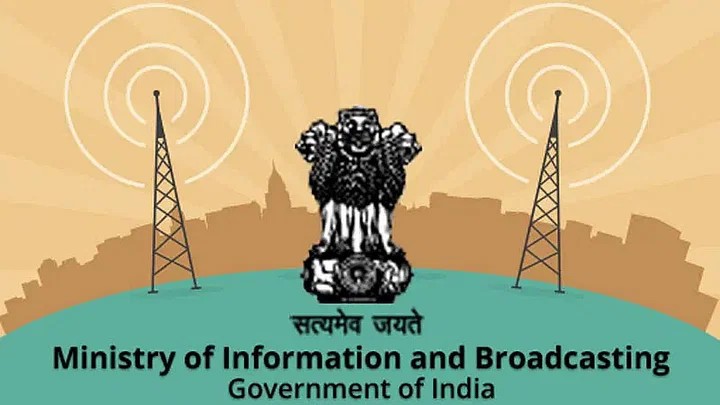
Broadcasting Services (Regulation) Bill, 2023

16.11.2023
Broadcasting Services (Regulation) Bill, 2023 , Daily Current Affairs , RACE IAS : Best IAS Coaching in Lucknow
|
For Prelims: About Broadcasting Services (Regulation) Bill 2023 For mains paper:Key features of the Broadcasting Services (Regulation) Bill 2023,Need,Criticism of the bill |
Why in the news?
Recently the Ministry of Information and Broadcasting (MIB) has released the draft of the Broadcasting Services (Regulation) Bill, 2023.
About Broadcasting Services (Regulation) Bill 2023:
- The Ministry of Information and Broadcasting, Government of India, has proposed a draft of the Broadcasting Services (Regulation) Bill, 2023.
- The draft Bill seeks to provide for a consolidated framework for regulating broadcasting services in the country as well as bring about changes in the existing Cable Television Networks (Regulation) Act, 1995 and other policy guidelines currently governing the broadcasting sector in the country.
- The objective of this Bill is to bring a consolidated legal framework for the broadcasting sector.
- The Bill extends the regulatory scope to OTT content, digital news and current affairs which are currently regulated through the Information Technology Act, 2000.
- Through this Bill, regulatory provision for various broadcasting services has been provided under a single legislative framework.
- The Bill consists of six chapters, 48 sections and three schedules.
Key features of the Broadcasting Services (Regulation) Bill 2023:
- Adaptability: The bill adapts to the dynamic world of OTT, digital media, DTH, IPTV and others while promoting technological advancement and service development.
- Comprehensive: It provides definitions of contemporary broadcasting and other important technical terms for the first time.
- Differentiated approach: This allows a differentiated approach to program and advertising codes across different services and requires self-classification by broadcasters and stronger access control measures for restricted content.
- Inclusivity: It aims to make broadcasting more inclusive and accessible to people with disabilities through the use of subtitles, audio descriptors and sign language.
- Accessibility for Persons with Disabilities: The Bill caters to the specific needs of persons with disabilities by providing enabling provisions for issuing comprehensive accessibility guidelines.
- There is also a provision for Disability Grievance Officers.
- Infrastructure sharing, platform services and ‘right of way’: The Bill also includes provisions for infrastructure sharing and carriage of platform services between broadcast network operators.
- Further, it streamlines the clause related to ‘Right of Way’ and establishes a streamlined dispute resolution mechanism to resolve the issue related to transfers and changes more efficiently.
- Dispute Resolution Mechanism: The Bill established a structured mechanism for dispute resolution.
- Statutory penalties and fines: The draft bill includes statutory penalties such as advisories, warnings, censure or monetary penalties for operators and broadcasters. The provision of imprisonment and/or fines continues as before, but only for the most serious offences, to ensure a balanced approach to regulation.
- Equitable Penalty: To ensure fairness and equity, monetary penalties and fines have been linked to the financial capacity of the entity, keeping in mind the investments and turnover of the entity concerned.
Need :
- The Cable Television Networks (Regulation) Act 1995 has been in effect for three decades. It serves as the primary law monitoring the content of live broadcasts, including cable networks.
- However, in the meantime there have been significant changes in the broadcasting landscape. Technological advancements have introduced new platforms such as DTH, IPTV, OTT and various integrated models.
- With the digitalization of the broadcasting sector, especially cable TV, there is a growing need to streamline the regulatory format.
- This includes ensuring ease of doing business and enhancing adherence to the Program Code and Advertising Code by broadcasters and distribution platform operators.
- Recognizing the need for a more cohesive approach, the existing regulatory framework needs to be replaced by a new, comprehensive legislation.
Criticism of the bill:
- Affect autonomy: Regulation may affect autonomy, as OTT platforms operate on a “pull model” where consumers choose the content.
- Impact on content innovation: Strict and subjective codes can lead to content censorship and impact the audience experience.
- Regulation: The Bill extends the regulatory scope to OTT platforms that are regulated under the IT Act.
- Pricing Regime: Since OTT content is regulated under the Bill, the government can bring in pricing regime for OTT content as it has done for television channels.
Broadcasting regulator in India:
- Ministry of Information and Broadcasting: It is the focal point for matters related to private broadcasting, Public Broadcasting Service (Prasar Bharati), multi-media advertising, regulation of print media, etc.
- Telecom Regulatory Authority of India (TRAI): It regulates the tariffs payable to subscribers of television channels and service providers in the broadcast area.
- Electronic Media and Monitoring Centre: It was established to oversee, monitor and record the content broadcast on television channels as per government norms and regulations.
- Prasar Bharati: It is a statutory autonomous body established by the Parliament under the Prasar Bharati Act 1990, and includes Doordarshan television broadcasting and All India Radio.
Cable Networks Act 1995: This regulates broadcaster and distribution registration, and the state government has established several monitoring agencies to ensure proper implementation of the Act.